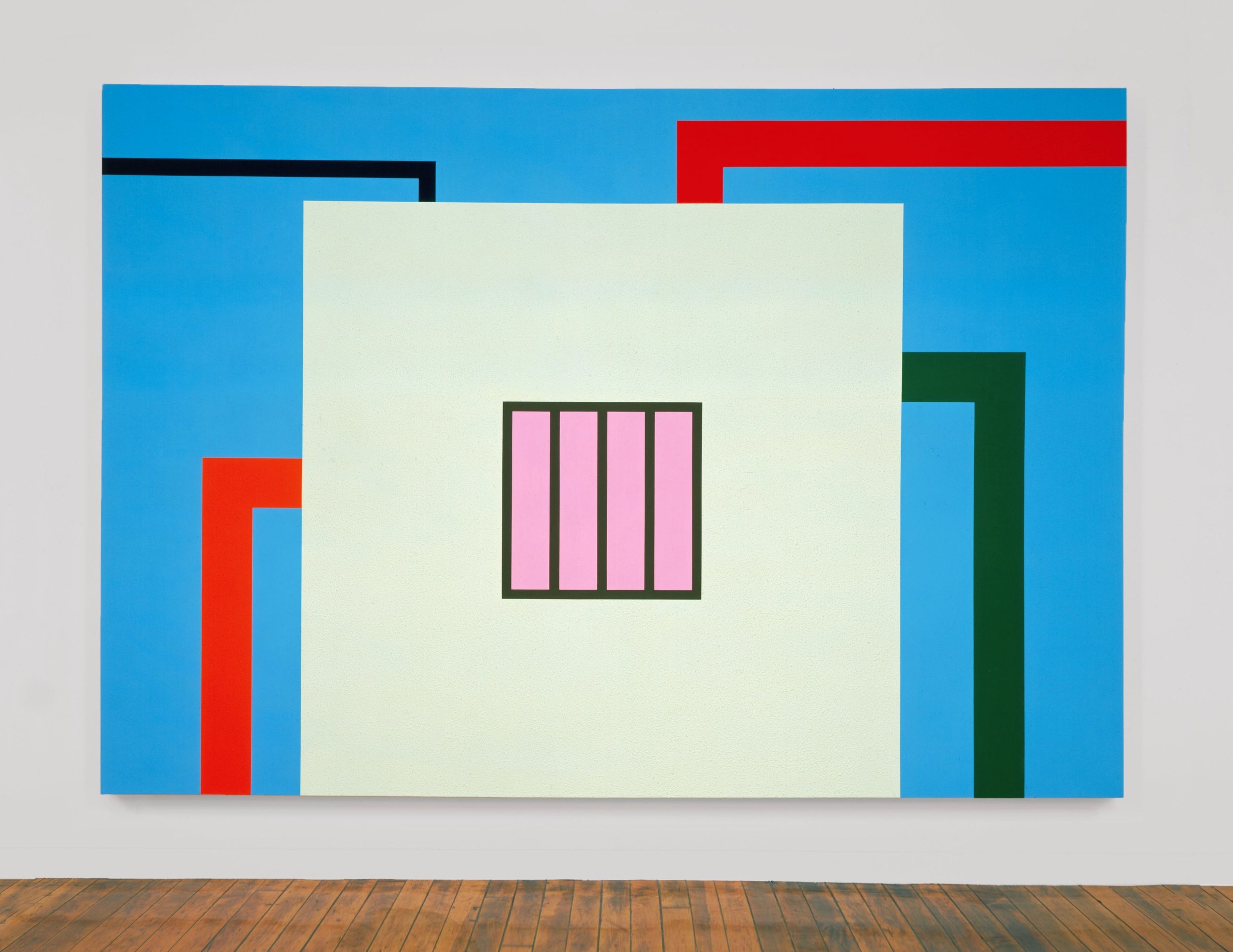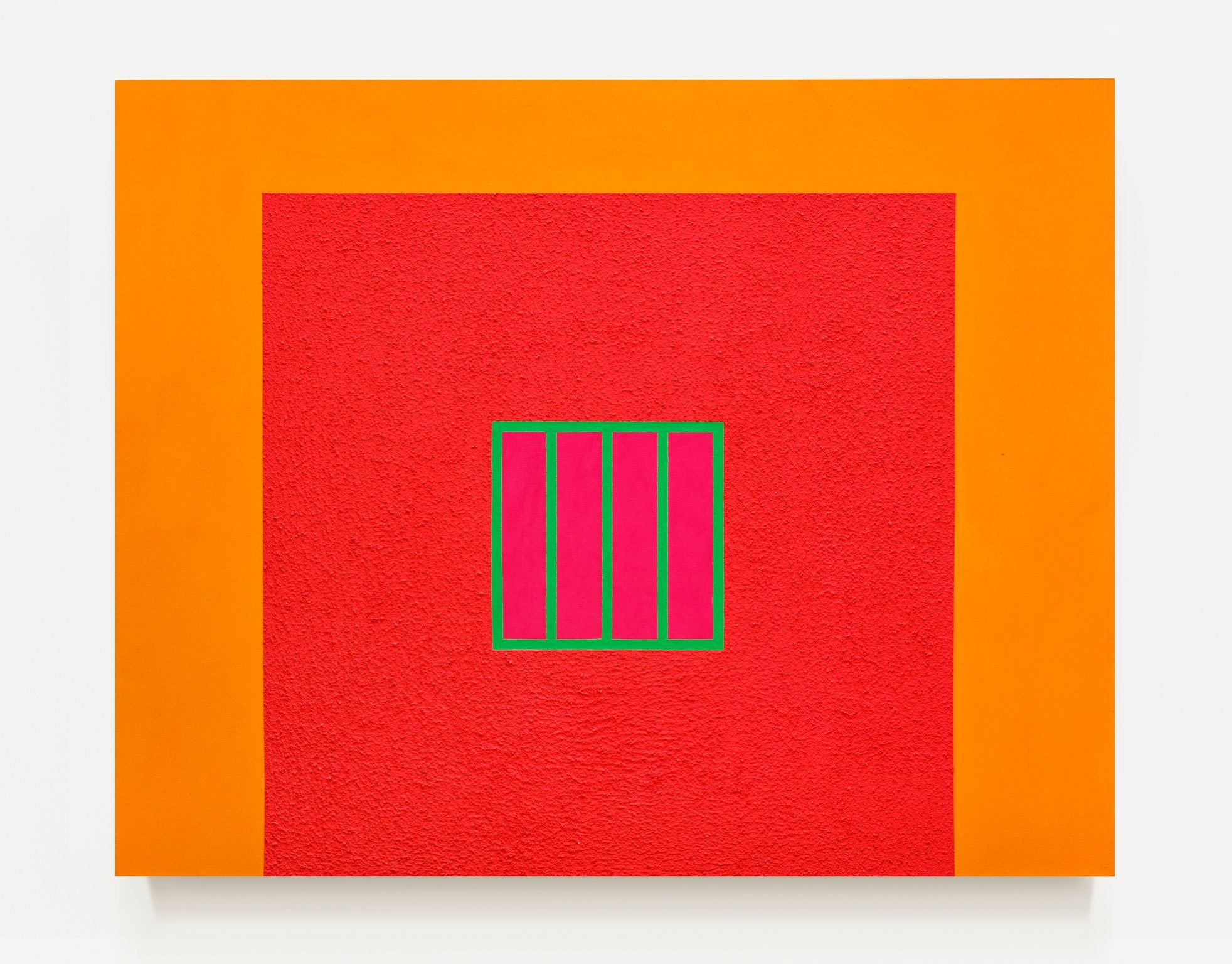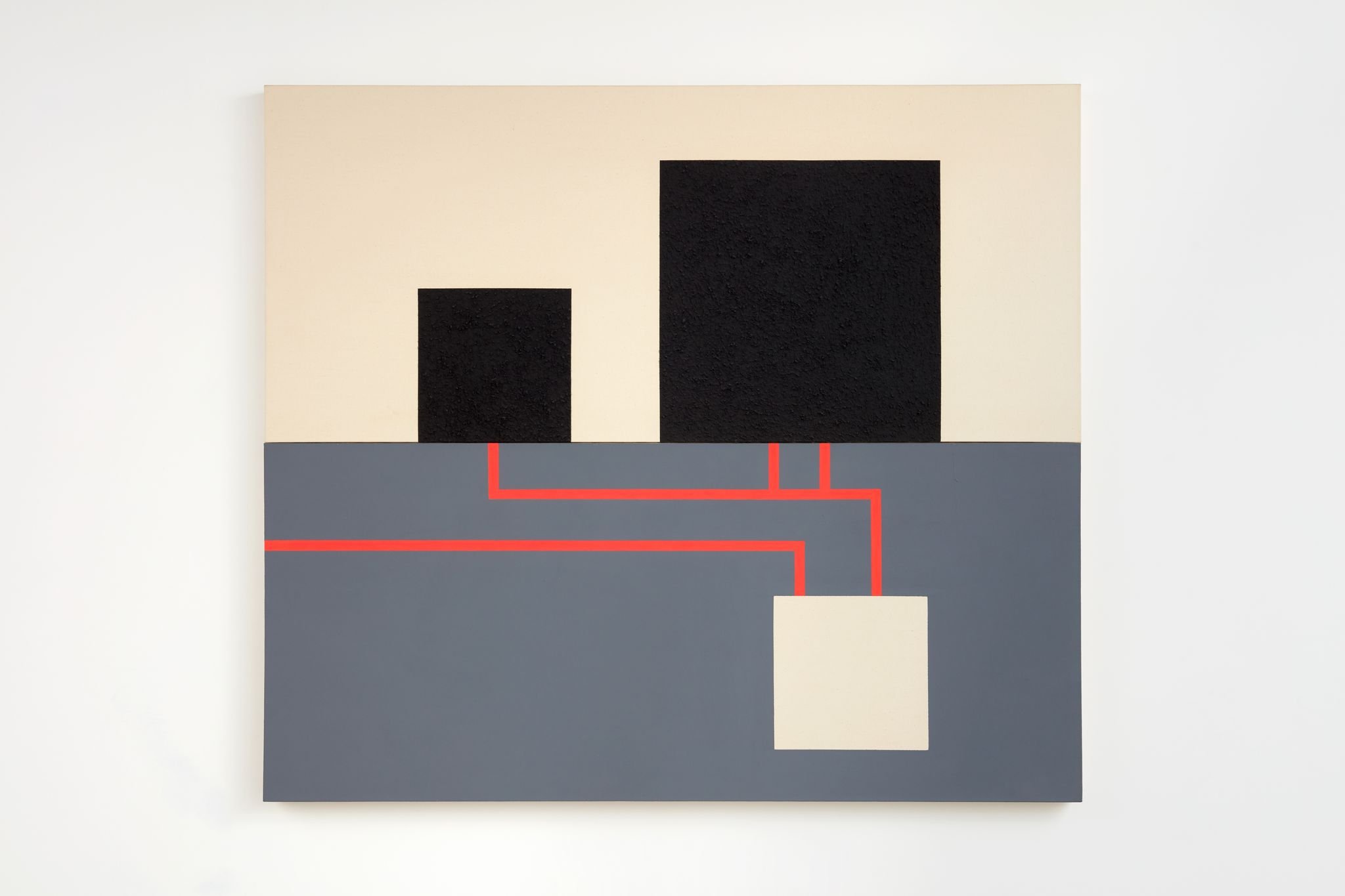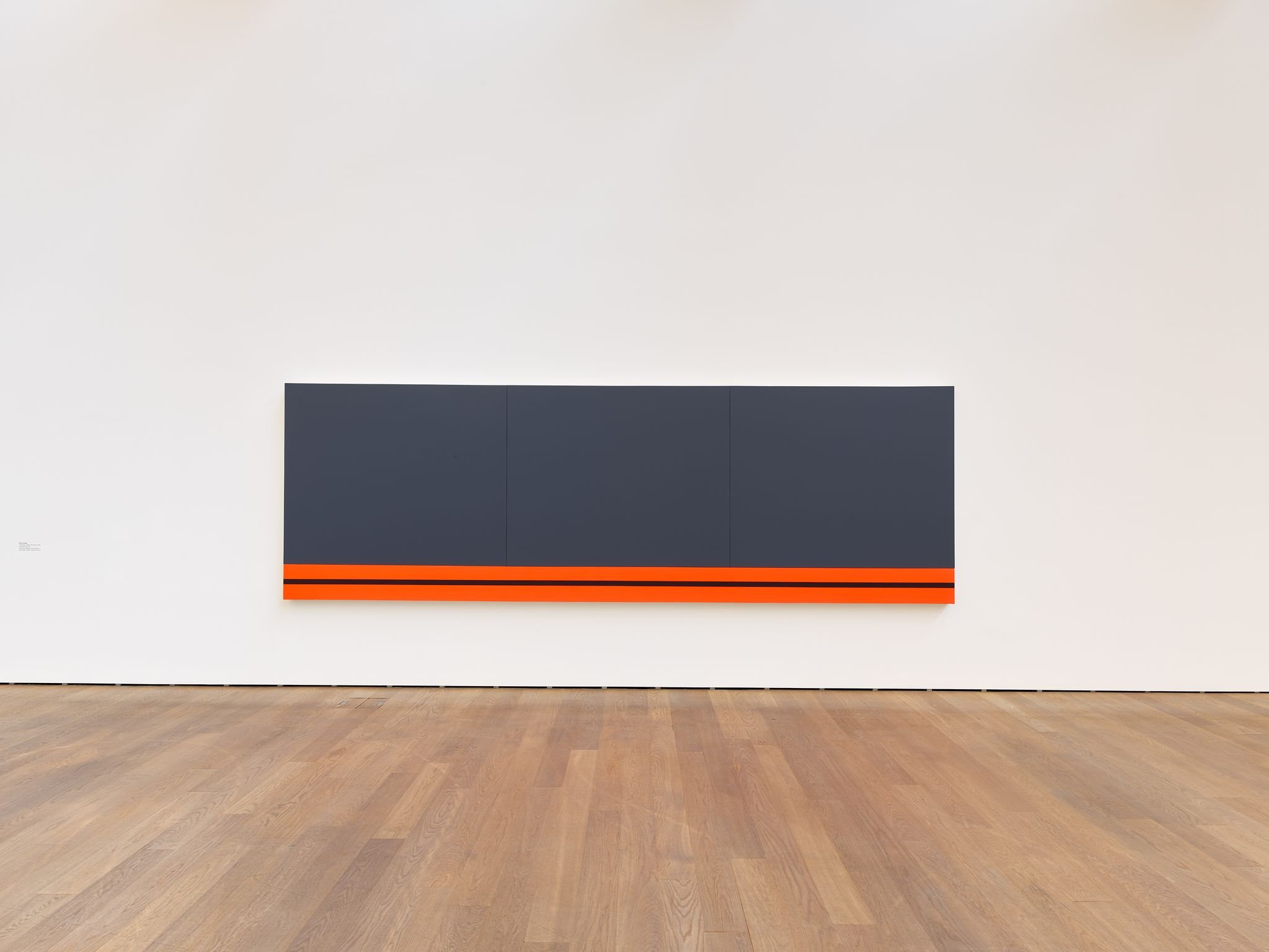Peter Halley. Prison, 1989. Acrylic, fluorescent acrylic and roll-a-tex on canvas, 83 1/4 x 119 1/4 in.
Courtesy of the artist and MUDAM Luxembourg
PETER HALLEY CONDUITS
by Cay Sophie Rabinowitz
During the 1980s, Peter Halley developed a signature vocabulary that has been the hallmark of his work for the past four decades. Redeploying the language of geometric abstraction, Halley developed a pictorial system of rectangular shapes and connecting lines suggestive of prisons, cells, and conduits that enabled him to produce diagrammatic paintings representing social subjects. Both indebted to the formalist traditions that stretch from constructivism to minimalism and at the same time strongly critical of that history’s atrophied viability, Halley triumphantly declared in 1984, “The formalist project in geometry is discredited.” In its stead, Halley proposed a new project rooted in “examination of the sociology of geometry in the modern era, ... literally a sociology of formalism.”
His paintings from that era address the impact and legacies of urbanization and industrialization within a post-industrial society marked by technological change. Working at the advent of the internet and at a time that saw the mass adoption of personal computers and video games, he described the physical and bureaucratic environments of the late twentieth century and the systemic logic that found expression within the architectures of a new digital space. Reflecting on this period in his essay, Geometry and the Social (1990), Halley wrote“I wanted to draw attention to this geometricized, rationalized, quantified world. I saw it as a world characterized by efficiency, by regimentation of movement, bureaucracies, whether in the corporation, government, or university. It is a world also characterized by the commodification and quantification of all aspects of human activity–where one can put a number or a dollar sign on any human activity... [Geometry is] the language of [the]managerial-professional class. It is the language of the corporation and flow charts; it is the language of urban planning and of communications.”
MUDAM in Luxembourg recently mounted the exhibition, Peter Halley. Conduits: Paintings from the 1980s, which surveys the artist’s works from this critical and significant period. Drawing on Halley’s critical writing, interviews, and unpublished notes to re-evaluate his early work and its subjects of alienation, isolation, confinement, and connectivity within the context of its production, the exhibition reflects upon the artistic and critical landscape of New York in the 1980s, a period of social history shaped by economic expansion and collapse, nuclear threat, and the AIDS epidemic.
Peter Halley. Day-Glo Prison, 1982. Fluorescent acrylic and roll-a-tex on canvas, 63 x 78 in.
Courtesy of the artist and MUDAM Luxembourg
Peter Halley. Two Cells with Conduit and Underground Chamber, 1983. Acrylic, fluorescent acrylic and roll-a-tex on unprimed canvas, 70 x 80 in.
Courtesy of the artist and MUDAM Luxembourg
Peter Halley. Yesterday, Today, Tomorrow, 1987. Acrylic, fluorescent acrylic and flashe on canvas, 62 x 192 in.
Collection MUDAM Luxembourg
Courtesy of the artist and MUDAM Luxembourg




